
table of contents
- Elderberry grows everywhere
- Saw off the bush
- Pond liner & Co
- Use of a stump grinder helpful
- Digging out most successful method
- Tree stump ex and root away granules
- Glyphosate extremely questionable
Elderberry (Sambucus) has been known as a remedy for many centuries. Its berries are extremely rich in vitamins and therefore very healthy. The elderberry bush also played a major role in human mythology and superstition. Once you have it in the garden, you must be careful that the elderberry bush does not take possession of the entire garden area. Removing elderberry is not that easy. Below are a few methods you can use to effectively ban the shrub from the garden.
Elderberry grows everywhere
An elder grows very quickly and can be found almost everywhere, whether in riparian forests, gardens or on rubble sites. It usually grows as a shrub, but also as a small tree. Such an elderberry bush can easily reach a height of 11 meters and live up to 100 years. It can also spread rapidly in the garden and overgrow the entire garden area. Removing elderberries is not exactly easy. A lot of muscle strength and patience are sometimes required.
Note: The leaves, bark, seeds and unripe berries contain slightly toxic glycosides. They can lead to indigestion, stomach upset, diarrhea and vomiting.
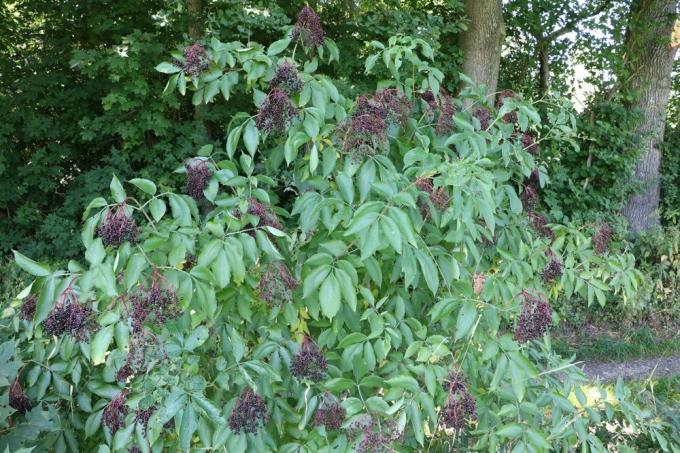
The Sambucus is one of the shallow roots. The roots spread out like a plate in the upper layer of soil. They grow horizontally around the shoot axes in the ground and can reach an immense radius. With increasing age, the growth also increases and the roots can protrude from the ground. Young, not fully developed shrubs up to three years of age are easy to remove. Sometimes they can simply be pulled out by hand when the earth is damp. With older specimens, removing them from the garden can be a bit more difficult and time-consuming. There are various means and methods for this:
Saw off the bush
This is certainly the easiest method. However, a lot of patience is required here, because the elderberry has enormous vigor and always sprouts new. It is then important that every new shoot is removed immediately. It can take three to four years or more for the elderberry bush to give up its fight and ultimately die. This method is suitable when Sambucus is close to buildings, walls or fences where other removal measures are difficult.
Pond liner & Co
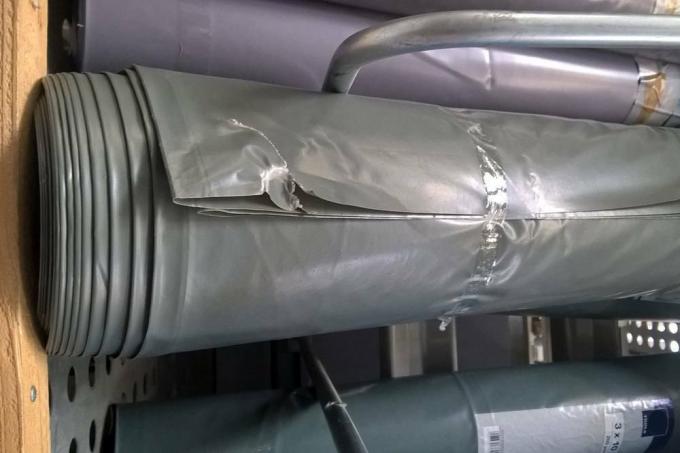
Also black, impermeable Pond liner or a special weed control fabric can be used. This method also requires a little patience. Even after a year, tender new shoots can continue to grow, which must always be removed. However, the elderberry will give up if it is deprived of light and water for a long time. However, it will take a few years here as well. Proceed as follows:
- Remove branches close to the ground
- Expose the rhizome
- Saw this off up to 10 cm below the ground
- then tight cover with foil
- a thick layer of bark mulch on top
Use of a stump grinder helpful
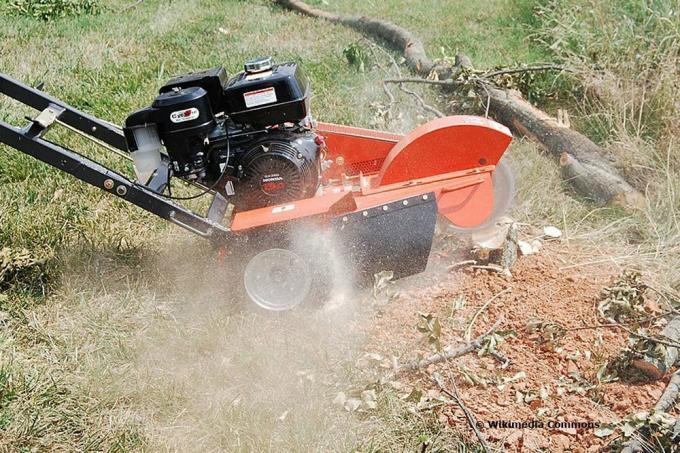
Another way to remove an elderberry bush is to use a stump grinder. It is easy to use, but quite heavy at around 130 kg. The milling machine is operated by a motor. With the help of a milling head, the roots are finely machined. The machining can be carried out down to a floor depth of 25 centimeters. In the end, all that remains is a loose soil enriched with fine wood chips.
Digging out most successful method
In order to remove an elderberry sustainably, digging it up promises the best results. However, this method requires a lot of strength and sweat will also flow, but in the end the elderberry is successfully banished from the garden. It is important that every single root, no matter how small, is carefully removed over a large area. Only then has the bush no chance of sprouting again. Alternatively, the root stock can also be removed using a pull rope or pulley block.
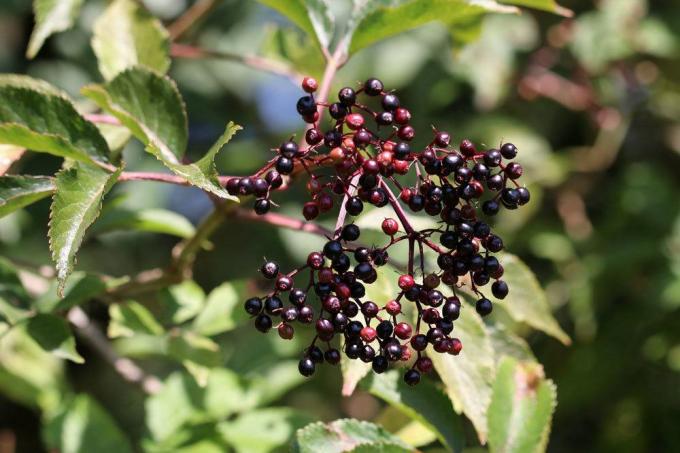
Tree stump ex and root away granules
Of course, it is easier to remove the root stock in the ground using special means that are available from specialist retailers. This includes "Baumstumpf-Ex" or the granules "Root gone". Both agents are harmless to the environment and other plants. They act like fertilizer in the soil. The application is also quite simple:
- Cut off branches close to the ground
- Depending on the size of the tree stump or branches, 10 to 20 holes are necessary
- Drill these on the side and on the surface
- Depth eight centimeters
- Pour in granules and cover
Protective gloves should be worn when applying the agent. It takes about three to twelve months for branches, stumps and roots to crumble. The leftovers can then be safely disposed of on the compost.
Glyphosate extremely questionable
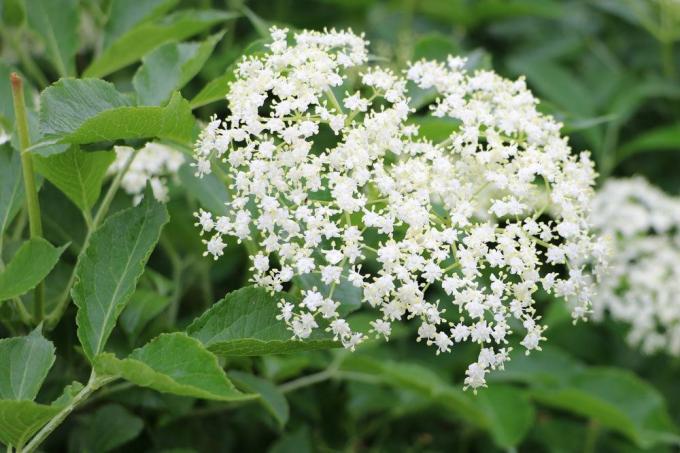
Last but not least, the use of other chemical preparations should be mentioned briefly. Many hobby gardeners swear by the use of glyphosate in the form of "Roundup" when removing an elderberry bush. This preparation should be applied undiluted to the cut surfaces, one meter high branches with a brush. An effect can be seen after a few days. However, glyphosate is a total herbicide which is also used in agriculture and is extremely controversial there. The agent must be used carefully, otherwise surrounding plants and especially organisms living in the soil can be damaged. Sometimes a certificate of competence is required here.
In addition, there are also chemical preparations whose production is based on sodium and magnesium nitrate. Such compounds are also used in fireworks. The application is not exactly harmless. These funds have to be mixed with petroleum and then poured into pre-drilled holes in the rhizome and finally set on fire. The root burns inside and the bush has no strength to grow again.
However, we would like to strongly advise against the use of such agents at this point. They damage the environment and, last but not least, your own health. Even if it is exhausting to completely dig up an elder in order to remove it from the garden in the long term, this method is extremely promising and at the same time you stay fit.
Note: Some hobby gardeners swear by the use of copper nails. Whether this method is helpful, however, remains questionable.



